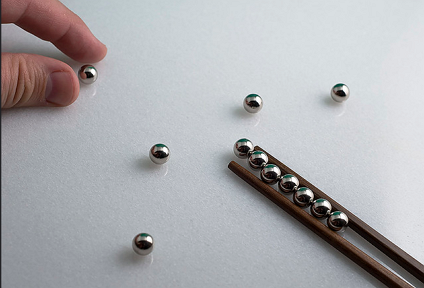Velocity of impact
 Two identical metallic balls of mass
and radius
are initially far apart. One sphere is of charge
and the the other is uncharged (neutral). After they are released due to electrostatic attraction the two spheres come together and collide. If the speed
of the balls after collision can be written as:
Two identical metallic balls of mass
and radius
are initially far apart. One sphere is of charge
and the the other is uncharged (neutral). After they are released due to electrostatic attraction the two spheres come together and collide. If the speed
of the balls after collision can be written as:
what is the value of ?
Details and Assumptions
The collision is perfectly elastic.
Image Credit: Flickr Russ B .
The answer is 7.
This section requires Javascript.
You are seeing this because something didn't load right. We suggest you, (a) try
refreshing the page, (b) enabling javascript if it is disabled on your browser and,
finally, (c)
loading the
non-javascript version of this page
. We're sorry about the hassle.
Setting up the images for this problem can be a headache....
From conservation of energy we have
2 ( 2 1 m v 2 ) + c o Q 2 = c ∞ Q 2
where c is the effective capacitance where Q 1 = Q and Q 2 = 0 .
c ∞ = R and c 0 = 2 R l n 2 to find this values you can read upon here and here .Thus solving for velocity we get:
v = ( ln ( 4 ) ) m R ( ln ( 4 ) − 1 ) Q 2
You can also get the full solution here